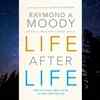

Livingstone, Takeda Professor of Neurobiology, Harvard Medical School But what did change, fortunately for the reader, is that he acquired the skill and confidence to convey deep scientific insights about the brain as they relate to a variety of subjects, such as abstract expressionist art, gender dysphoria, poverty, and morality. Of course Eric Kandel didn’t stop doing experiments on learning and memory after he got a Nobel Prize he would have had to become an entirely different person. Ramachandran, author of The Tell-Tale Brain: A Neuroscientist’s Quest for What Makes Us Human Kandel has excelled in three: first his discovery of the neural basis of memory-a discovery comparable to DNA second, as an art historian successfully bridging art and neuroscience and now, a parallel career, as a science writer of almost unparalleled excellence. While most of us struggle to succeed in a single discipline, Eric R. This is an amazing book that gives us a peek inside the mind of one of the giants of contemporary neuroscience. Showcasing Kandel’s accomplishments, erudition, and wit, There Is Life After the Nobel Prize is a candid account of the working life of an acclaimed scientist. Kandel also discusses his return to Austria, which he had fled as a child, and observes Austria’s coming to terms with the Nazi period. He describes his efforts to promote public understanding of science and to put brain science and art into conversation with each other. Kandel relates how the Nobel Prize gave him the opportunity to reach a far larger audience, which in turn allowed him to discover and pursue new directions.

In this book, Kandel recounts his remarkable career since receiving the Nobel in 2000-or his experience of proving to his wife that he was not yet “completely dead intellectually.” He takes readers through his lab’s scientific advances, including research into how long-term memory is stored in the brain, the nature of age-related memory loss, and the neuroscience of drug addiction and schizophrenia. Sociologists had found that Nobel Prize winners often did not contribute much more to science, she explained. “I hope not soon,” Kandel’s wife, Denise, said when she heard this. Also, the officer said, he and his colleagues thought Kandel would win the Nobel Prize. Kandel took a call from his program officer at the National Institute of Mental Health, who informed him that he had been awarded a key grant. One day in 1996, the neuroscientist Eric R.


 0 kommentar(er)
0 kommentar(er)
